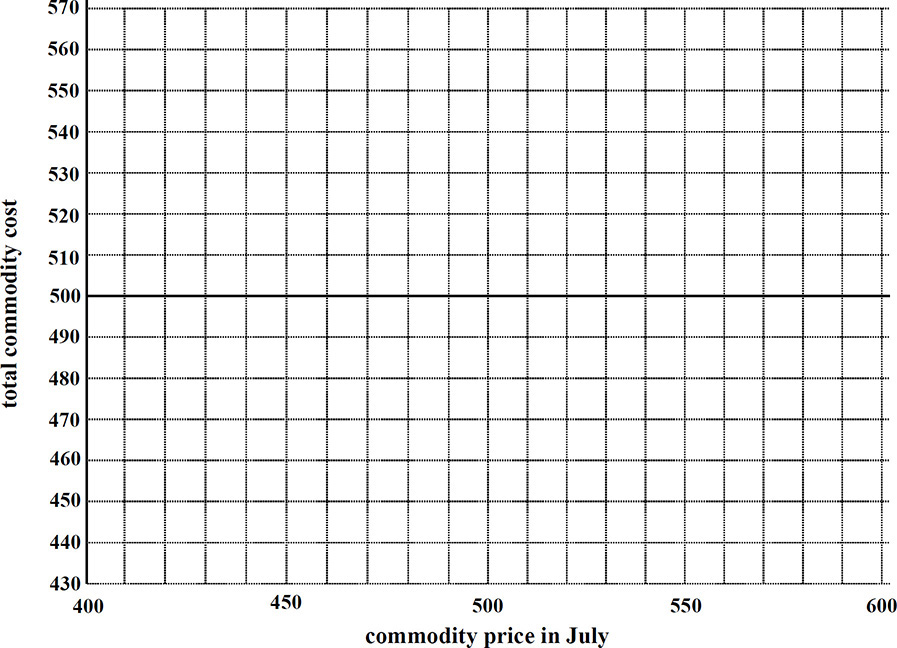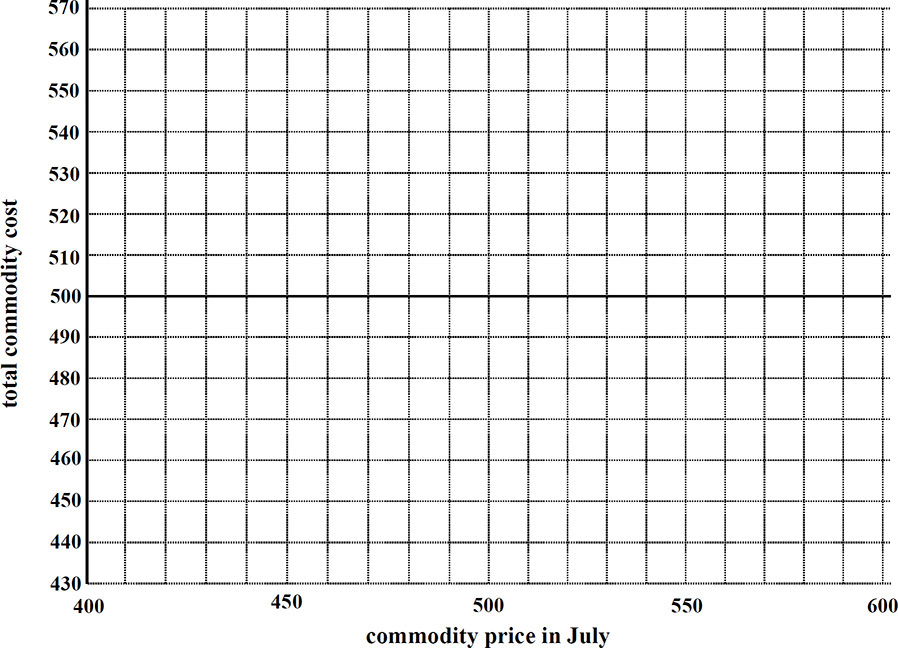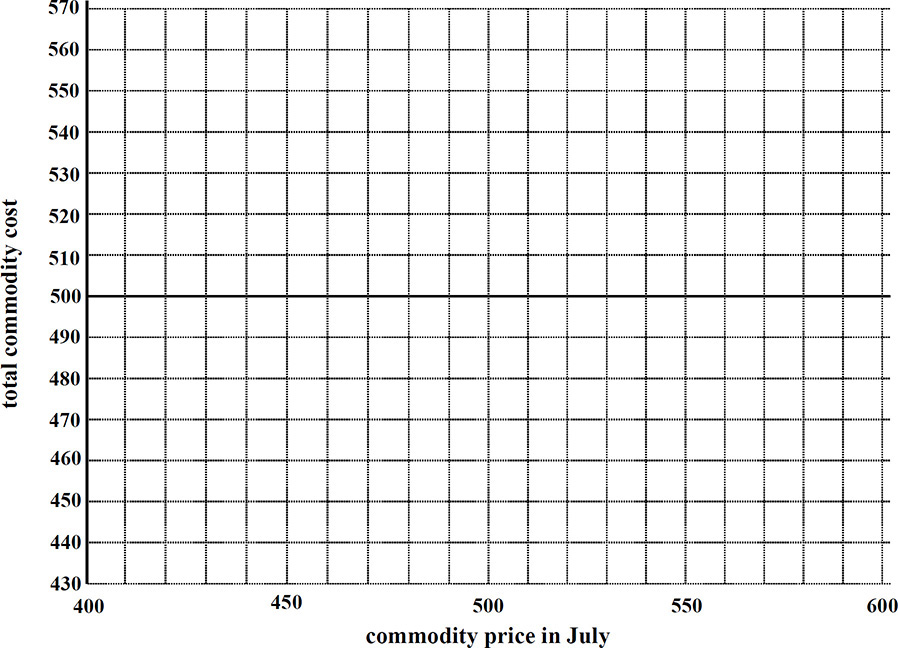| CHAPTER 16 |
Hedging Strategies
1. Besides trading a futures contract, for someone trying to protect an underlying position, the two most common, and simplest, hedging strategies using options are:
buy a protective option
sell a covered option
You are currently long stock on which both futures and options are available.
a. Which of the following strategies will offset at least some of your risk?
______ buy a futures contract
______ sell a futures contract
______ buy a call
______ sell a call
______ buy a put
______ sell a put
b. For each of your choices in part a, choose the characteristics from the list below that go with each hedging strategy
i. limited profit potential
ii. limited risk
iii. unlimited profit potential
iv. unlimited risk
v. no profit potential
vi. no risk
vii. results in a credit
viii. results in a debit
c. For each of your choices in part b, which strategies should you prefer if:
i. implied volatility is high (all options seem expensive)?
ii. implied volatility is low (all options seem cheap)?
2. In addition to common hedging strategies, an underlying position can also be hedged with a more complex strategy. Any option position with a negative delta can be used to hedge a long underlying position, and any option position with a positive delta can be used to hedge a short underlying position. By choosing appropriate exercise prices, almost all common spreading strategies can be done in such a way as to create a positive or negative delta position. However, unlike the strategies in question 1, which always maintain the same sign for the delta, the delta for a complex strategy may invert, going from positive to negative, or negative to positive, as market conditions change. When this occurs, the spread may no longer act as a hedge, and may, in fact, add to the risk.
You are currently long stock, with the stock trading at a price close to 50.
a. Which of the following strategies will offset at least some of your risk? (That is, which strategies have a negative delta?)
______ buy a 40 call calendar spread
______ buy a 40 put calendar spread
______ sell a 40 call calendar spread
______ sell a 40 put calendar spread
______ buy a 60 call calendar spread
______ buy a 60 put calendar spread
______ sell a 60 call calendar spread
______ sell a 60 put calendar spread
______ buy a 60 straddle
______ sell a 60 straddle
______ buy a 40 straddle
______ sell a 40 straddle
______ buy a 45 / 50 call spread
______ sell a 45 / 50 call spread
______ buy a 45 / 50 put spread
______ sell a 45 / 50 put spread
______ buy a 50 / 55 call spread
______ sell a 50 / 55 call spread
______ buy a 50 / 55 put spread
______ sell a 50 / 55 put spread
b. For each of your choices in part a, choose the characteristics from the list below that go with each hedging strategy.
i. limited profit potential
ii. limited risk
iii. unlimited profit potential
iv. unlimited risk
v. results in a credit
vi. results in a debit
c. For each of your choices in part a, which strategies would you prefer if implied volatility is high (all options seem expensive)?
3. A collar consists of simultaneously buying a protective option and selling a covered option. A long collar is used to hedge a long underlying position; a short collar is used to hedge a short underlying position.
You have a short futures position with the futures contract currently trading at a price close to 160. You would like to hedge your position with a collar.
a. Which of the following positions will serve as a hedge?
______ long a 170 call / short a 150 put
______ long a 150 call / short a 170 put
______ short a 170 call / long a 150 put
______ short a 150 call / long a 170 put
______ long a 165 call / short a 145 put
______ long a 145 call / short a 165 put
______ short a 165 call / long a 145 put
______ short a 145 call / long a 165 put
______ long a 175 call / short a 155 put
______ long a 155 call / short a 175 put
______ short a 175 call / long a 155 put
______ short a 155 call / long a 175 put
b. From the selected strategies in part a, which strategies would you prefer if implied volatility is low (all options seem cheap)?
c. From the selected strategies in part b, which do you think will be easiest to execute in the marketplace?
4. A producer of a commodity is a natural long: any increase in the commodity price will benefit the producer, while any decline in the price will hurt. A producer can set a price floor by purchasing a put option. When it comes time to sell the commodity, the producer will never receive less than the put’s exercise price.
An end user of a commodity is a natural short: any decline in the commodity price will benefit the end user, while any increase in the price will hurt. An end user can set a price ceiling by purchasing a call option. When it comes time to purchase the commodity, the end user will never pay more than the call’s exercise price.
You are an end user of a commodity who requires delivery of the commodity in July. The current price for a July futures contract is 496.50. The following options are also available:

a. Using only single contracts, from the above list what are the possible hedging choices?
b. Ignoring transaction costs and any interest considerations, for each of the possible strategies, what will be your total commodity cost at July expiration?

c. On the following grids, plot the total cost involving call strategies (one grid) and the total cost involving put strategies (another grid).


In addition to protective options and covered options, a hedge can combine the two strategies, simultaneously buying a protective option and selling a covered option. This will create a collar.
d. Suppose you simultaneously buy a July 525 call and sell a July 475 put. Ignoring transaction costs and any interest considerations, what will be your total commodity cost at July expiration?
e. Instead of buying a July 525 call and selling a July 475 put, you decide to buy a July 550 call and sell a July 450 put. Ignoring transaction costs and any interest considerations, what will be your total commodity cost at July expiration?
f. On the following grid, plot the total commodity cost for both of these strategies.

5. You own stock that is currently trading at 63.50. In order to hedge against a decline in the stock price you decide to buy a three-month put with an exercise price of 60. Unfortunately, you find that no such put is listed on any exchange. If your goal is still to buy the 60 put, in theory what can you do?
